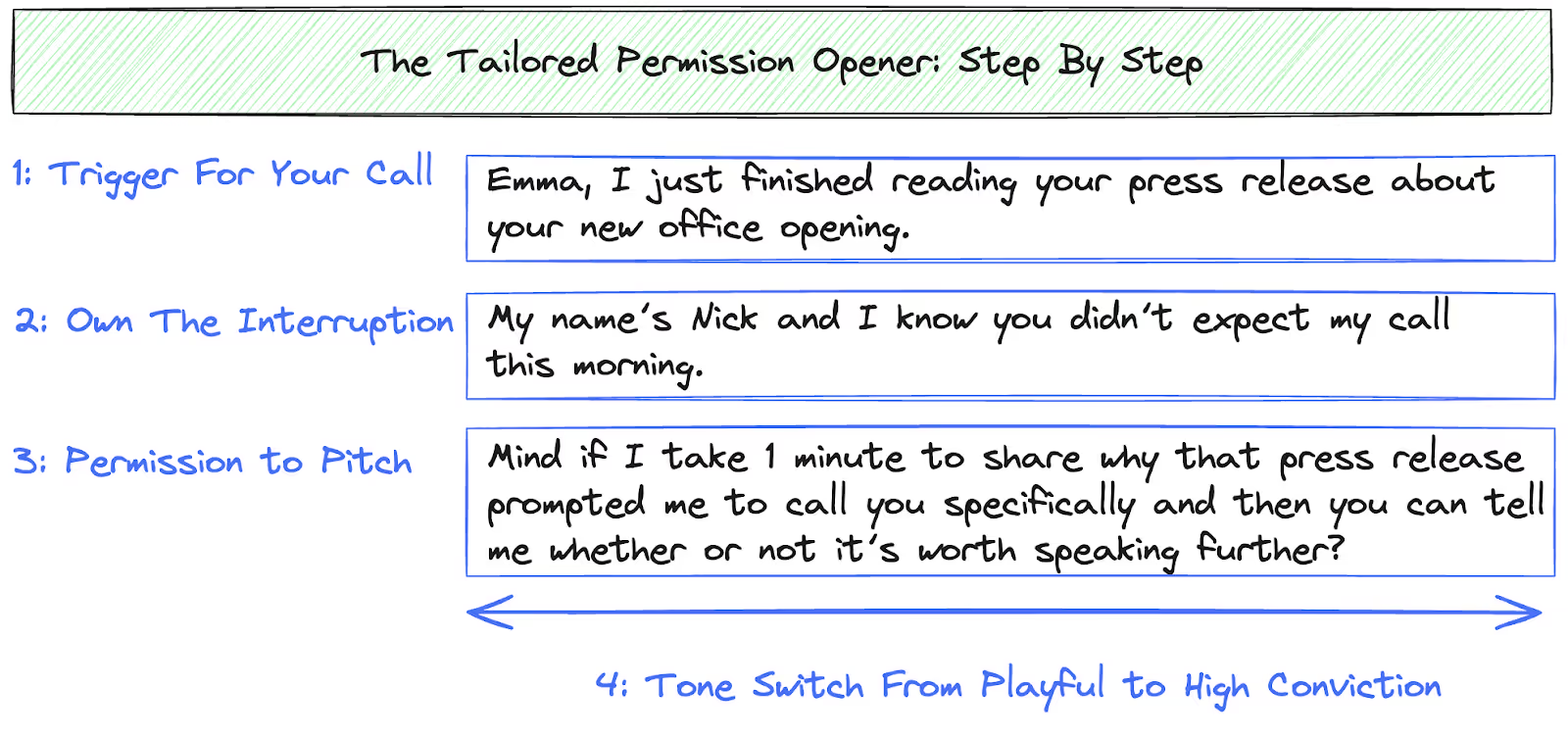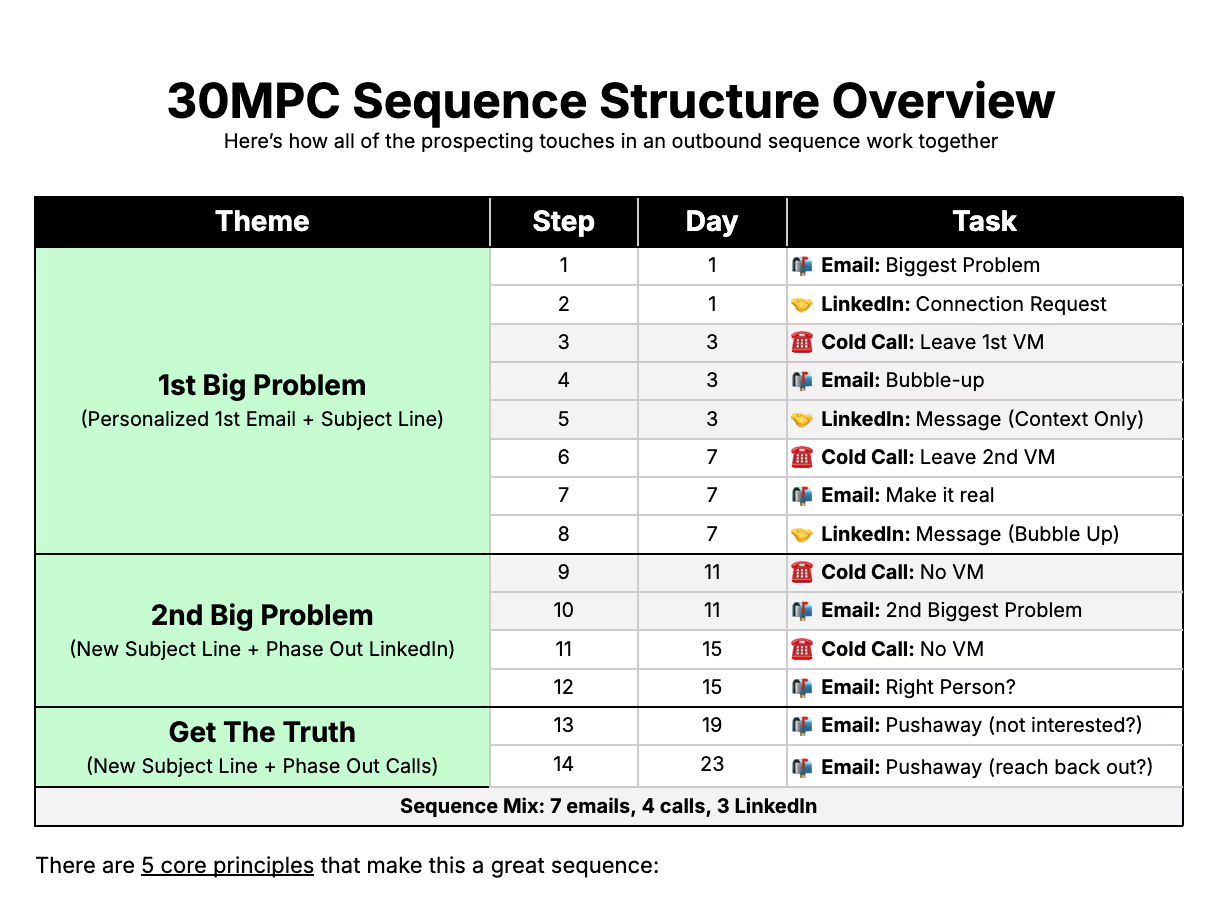The way you open your cold call will make or break the rest of the call.
You could be selling the perfect product or even selling winning lottery tickets. But if you can’t make it past the first 7 seconds, you won’t sell anything.
Lucky for you, we have two proven openers that we’ve used to get people engaged in the conversation and buy from us: the 1st is Nick’s way and the 2nd is my way.
#1 – The Tailored Permission Opener (Nick’s Way)
When someone answers their phone from an unknown number, they immediately want to figure out
- Who is this person?
- Why are they calling me?
- How long will this call take?
Your cold call is an interruption to their day–you can’t forget that.
1. Here’s a traditional permission-based opener
“Hey Emma, this is Nick Cegelski’ with 30MPC. Look, I know you didn't expect me to call you this afternoon. Do you mind if I take one minute? I'll tell you why I called, and then you can tell me whether or not it's worth a chat.”
2. Here's the issue with it
It’s a decent start. But the customer can’t tell if you’re a telemarketer going through the phone book or if you’re someone making a professional cold call.
3. Here's what you should do instead (The Tailored Permission Opener)

What’s the difference?
On top of addressing their initial concerns, Nick shares why he called Emma specifically. He’s done his homework, and this gives Emma some confidence that this call may be relevant for her.
In this example, Nick used her press release. But you can mention a variety of relevant sources: job postings, blog posts, or a podcast interview that the founder was featured on.
“I just finished listening to a podcast you were on and it made me want to call you…”
Leading with this kind of opening will increase the odds in your favor.
#2 – Heard The Name Tossed Around Opener (Armand’s Way)
As I mentioned earlier, customers are trying to categorize if you’re a rando or not in the first 7 seconds. The Heard The Name Tossed Around opener is an easy way to establish some trust and intrigue to get customers to engage with you.
Here’s what it looks like in practice. Imagine I'm cold-calling Bill, a partner at a consulting firm.
.avif)
Let’s break down why this is so effective.
Step #1: Lead with the common thread that you have with that customer.
In this example, I worked with a few of their partners. But in your case, you might:
- Share a similar investor
- Have customers in the same investor's portfolio
- Work with one of their competitors
- Work with companies in the same industry
- Work with companies in the same geography
There is always some connection you can find, even if it’s small. Lead with that first to establish some level of trust.
Step #2: Introduce yourself, but understand that the emphasis is not on you.
You’ll notice my tone dips down a bit when I introduce myself. That’s because I don't want to draw attention to myself (because who cares?) I want to draw the customer’s attention to the next question.
Step #3: Ask “Have you heard our name tossed around?”
Say this line in a nonchalant, shoulder-shrugging way, Like you’re casually asking, “You’ve heard our name tossed around, right?”
You almost want to make them feel a bit weird if they haven’t heard your name. This creates the perception that you are not a rando and you have the right to be in their space.
If they say yes, you don’t need to pitch at all. You can continue with,
“Hey, that’s awesome. Normally we’d be working with someone like you by now. What did you hear?”
If they say no, you could transition back to the traditional permission-based opener.
“Well, we work with a couple of other Sequoia Capital portfolio companies. Can I give you a sense of what we have going on with them? And then you can tell me if it’s even moderately relevant for us to meet again.”

















